It can be fun to breed your own zinnias - Part 55
zen_man
3 years ago
last modified: 3 years ago
Featured Answer
Sort by:Oldest
Comments (121)
meconella
3 years agolast modified: 3 years agozen_man
3 years agolast modified: 3 years agoRelated Discussions
It can be fun to breed your own zinnias - Part 24
Comments (103)Hi Alex, " I'd certainly be interested in finding an adaptor that worked! I guess I'll have to look into it all again, unless you can backtrack and give me the links other than Wiki that told you about those adaptors. " Well, I think there is a really good chance that the adapter I originally linked to would work. I'll repeat the link here. It is the Fotodiox Lens Mount Adapter, Canon FD, FL Lens to Nikon Camera, for Nikon D7100, D7000, D5200, D5100, D3100, D300, D300S, D200, D100, D50, D60, D70, D80, D90, D40, D40x, N70s, D80, D800, D800e, D4, D3, D2, D1, D300, D300s, and D200. You can read the product description and then read the 26 customers reviews that Amazon has published for the product. Amazon has a good reputation for letting you return a product if it doesn't work for you or turns out to be defective. With no hassle they let me return a telescopic sight for a rifle that didn't live up to my expectations. I think if that adapter didn't work for you that you could return it. "I swear I looked at all that stuff, and had been convinced the adaptors wouldn't work, but I'd love to be proven wrong." Well, at the time you checked, there may not have been an adapter to use Canon FD lenses on Nikon SLRs. That adapter includes compatibility with Nikon D7100, D7000, D5200 cameras, which are relatively "late model" cameras. And almost all the lens adapters on Amazon are designed to adapt Nikon lenses for use on Canon cameras. Only the one I linked, and another that was out of stock, were to adapt Canon lenses for use on Nikon cameras. "Wait a minute, maybe it's the macro-lens I should be checking..." You should verify that it is a Canon FD or FL lens, and that it is in serviceable condition. " I have a scanner that will scan negatives, and I had them develop the film, but not print it, since I could save it digitally from the scanner." Impressive. So you also can extract digital images from all those old film negatives. I have an old Epson Perfection V750 Pro that can scan transparencies or opaque material. A good many years ago I bought a Stereo Realist camera and took a bunch of stereo slides. I have scanned a few, and made large prints from them for my sister, but I should take the time to scan a bunch more of them. It has three selectable scanning resolutions, 4800 dpi, 6400 dpi, and 9600 dpi. The higher the resolution, the slower the scan. And I use the maximum resolution on my stereo slides, because each side of a slide is only 23 x 24 mm. Not much to work with. Fortunately, Kodachrome is almost grainless, and I can get decent 8x10s from a stereo slide. I have some software (onOne's Perfect Resize) that could let me go bigger, but I haven't tried that yet. I have been thinking about getting a beam splitter for my Nikon D3200 so I could take some 3D pictures with it. And maybe some 3D video. It would be "cool" to take some 3D footage of a wooly worm eating away at one of my zinnias. Maybe not. My zinnia gardens have a surprisingly diverse ecology, with a lot of opportunities for close-up photography and videography. More later. ZM (not associated with any product or vendor mentioned or linked)...See MoreIt can be fun to breed your own zinnias - Part 23
Comments (101)Hi Alex, " I can't even get into the garden! There's a heavy pile of snow/ice gluing the gate shut. " Clearly you have a much more arctic climate in Michigan than we here in Kansas. The top few inches of our soil have thawed, although it is still hard frozen a few inches down. I am hoping that our soil will thaw some more this week, because there is an area of my garden that has a lot of rocks in it that I want to rake out before planting it. Right now the rake teeth just sort of "bounce off" of that still frozen layer. Incidentally, you have mastered the "blockquote" thing quite well. There are a couple more HTML things that are easy to use, and handy sometimes. They are "b" for bold and "u" for underline. In these examples, as before, I will use square brackets to indicate the HTML, and let angle brackets, which you don't see, cause the actual execution of the HTML. Sometimes, [b] if you want something to stand out a bit [/b], you can use the "b" command, and [u]if you really want to emphasize something[/u], you can use "u" to underline it. You can [b][u]combine the two[/u][/b] if you want, or [I][b][u]use all three [/u][/b][/I]. There is another HTML command, the "font" command, that is somewhat more complicated, and somewhat more capable. You can use it to [font color="red"] change the color of your text,[/font] but I don't usually have a need for colored text. Incidentally, there are an amazing number of colors at your disposal. I just picked red because it is a simple example. You may or may not have noticed that I used the "font" command to change the typeface of this paragraph, up to this point. I used the [font face="Georgia"] command. Most, perhaps all, browsers let you set a default typeface, and this forum itself probably controls its fonts as well. I sometimes enjoy diddling with details, but I hope the phrase "the Devil is in the details" doesn't apply to me. Back to the weather, we are having a nice sunshiny day here. I know your weather will improve and sometime this Summer, when I am sweltering in three-digit heat, you will be much more comfortable. More later. ZM...See MoreIt can be fun to breed your own zinnias - Part 46
Comments (103)Well, I have missed a bit, I see. Firstly, let me address Sayuri's statement: I assumed most of you guys to be well off retirees. Chuckle, snicker, SNORT! You can definitely leave me out of that assessment - ha! Well, yes, I'm semi-retired, if one can call it that, but far from being well off. Certainly not living in the manner to which I wish I'd become accustomed. But we manage to keep the cats (and ourselves) fed. And I'm a very accomplished scrounger. :) Now, secondly, I don't have a cat walking across my keyboard as I did earlier, but I can't find the pic I'd been thinking about of the newly made beds. Instead, here's a somewhat later photo which shows the raised beds already planted. As you can see, Sayuri, I don't have sides to my beds - I've just shoveled the loose dirt from the paths (after tilling) onto the bed areas, raising them up somewhat. The looser the dirt, the easier it is to scoop it up and pile on the beds. And this area was soft and clear of grass and weeds because it had been under tarps for about a year and a half. I've done this in other areas, but none have worked as well as this, probably because the other spots had poorer, less loamy soil to begin with. You're in a hurry, though, so I get the idea of the herbicide, even if, personally, I can't bring myself to trust a chemical that supposedly kills some plants, but not others. History has proven me wrong, but I still have a problem with the concept. Oh well - whatever. My point is, you can make raised beds without the bother of being fancy about it. I do it every year, though I've been working on this area in particular, using straw mulch, to make it so I never have to till again, or rebuild the beds. I don't have a shot from 2017 corresponding to this exact location, but here's one from July 2017 in a couple of beds that would be to the left of these pictured: You can't really tell, but the beds are still slightly higher than the paths, even after a couple of years. It's because, once built, they never get walked on. They'll be even higher this year because I intend to dump a load of composted manure on them. That may cost a bit, but it will be worth it. Ninecrow - that is one audacious, bodacious snail!!! Wow - have never seen one like it. Cool. Go Gatchaman! Namaste, Alex...See MoreIt can be fun to breed your own zinnias - Part 48
Comments (109)Hi Ninecrow, Yeah, yeah, I know. I created Part 49, but Houzz lost it somehow. I have a Trouble Report in with them, but so far the only response is an automatic "we got your message" response. This was caused by a bug in the Houzz software, and I am not impressed that after 24 hours from reporting the problem, I still have not communicated with a Houzz human being. It will eventually get resolved, and there will be a Part 49. Oddly, the Link that doesn't work for you does work for me. But that is the only way I can access the new Part 49. I may just be accessing it in a local browser buffer. It doesn't show up in the Annuals message list or the Hybridizing message list (which I tagged for Part 49 because multiple forums for a message string is a feature of the new software). Unfortunately, using that feature led to the disappearance of the new Part 49. If I had not chosen to use the new feature, Part 49 would already be there for us. We shall see what we shall see. ZM...See Morezen_man
3 years agolast modified: 3 years agocindip63
3 years agolast modified: 3 years agozen_man
3 years agolast modified: 3 years agocindip63
3 years agomeconella
3 years agozen_man
3 years agolast modified: 3 years agomeconella
3 years agocindip63
3 years agomeconella
3 years agocindip63
3 years agomeconella
3 years agolast modified: 3 years agocindip63
3 years agomeconella
3 years agocindip63
3 years agozen_man
3 years agolast modified: 3 years agozen_man
3 years agolast modified: 3 years agozen_man
3 years agolast modified: 3 years agomeconella
3 years agosharon2079
3 years agozen_man
3 years agolast modified: 3 years agomeconella
3 years agozen_man
3 years agolast modified: 3 years agocindip63
3 years agolast modified: 3 years agozen_man
3 years agolast modified: 3 years agomeconella
3 years agozen_man
3 years agolast modified: 3 years agomeconella
3 years agozen_man
3 years agolast modified: 3 years agomeconella
3 years agolast modified: 3 years agozen_man
3 years agolast modified: 3 years agomeconella
3 years agozen_man
3 years agolast modified: 3 years agomeconella
3 years agowoodnative
3 years agowoodnative
3 years agocindip63
3 years agoGargamel
3 years agozen_man
3 years agolast modified: 3 years agosharon2079
3 years agolast modified: 3 years agozen_man
3 years agolast modified: 3 years agok c
3 years agozen_man
3 years agolast modified: 3 years agok c
3 years agozen_man
3 years agolast modified: 3 years agosamhain10 - 5a
2 years agozen_man
2 years agolast modified: 2 years agozen_man
2 years agolast modified: 2 years ago
Related Stories
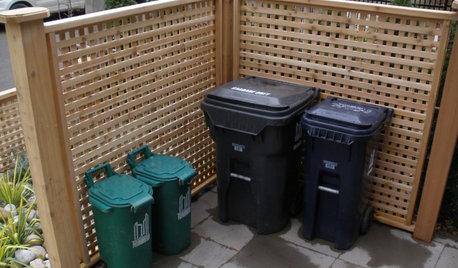
THE POLITE HOUSEThe Polite House: What Can I Do About My Neighbors’ Trash Cans?
If you’re tired of staring at unsightly garbage way before pickup day, it’s time to have some tough conversations
Full Story
PETSWhat Chihuahuas Can Teach Us About Interior Design
Who knew these tiny dogs could be such a huge fount of design tips? Houzzers did
Full Story
GARDENING FOR BUTTERFLIESA Quick-Start Guide to Bird-Watching for Fun and Learning
Set out some seed and grab your field guide. Bird-watching is an easy, entertaining and educational activity for the whole family
Full Story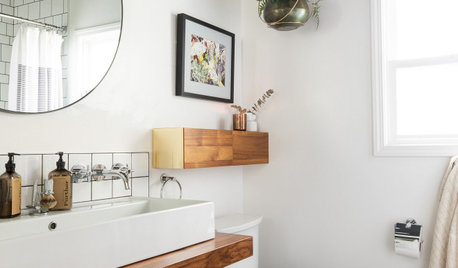
BATHROOM MAKEOVERSBathroom of the Week: An Open Feeling in 55 Square Feet
A designer uses Houzz ideabooks to identify a couple’s love of midcentury modern and clean vintage style
Full Story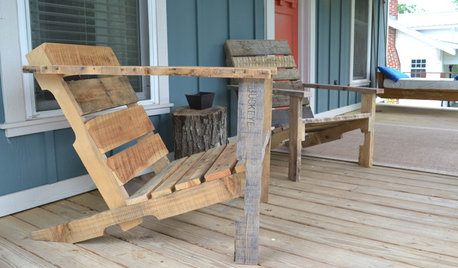
WOODWORKINGBuild Your Own Wooden Deck Chair From a Pallet — for $10!
Take the ecofriendly high road with a low-cost outdoor chair you make yourself
Full Story
INSPIRING GARDENSWhat We Can Learn From Longwood Gardens’ New Meadow
Sustainability, ecology, native plant communities ... this public garden is brimming with lessons on horticulture for home gardeners
Full Story
FARM YOUR YARDHello, Honey: Beekeeping Anywhere for Fun, Food and Good Deeds
We need pollinators, and they increasingly need us too. Here, why and how to be a bee friend
Full Story
DECLUTTERING10 Decluttering Projects You Can Do in 15 Minutes or Less
Try these ideas to get organized at home one small step at a time
Full Story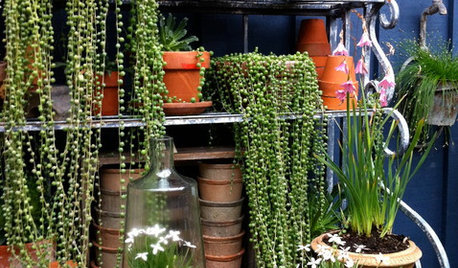
HOUSEPLANTSCascading Succulents Bring Fun Shapes to Your Indoor Garden
For eye-catching spillers with delicate beauty and minimal needs, it's hard to beat these 2 trailing houseplants
Full Story
KITCHEN DESIGNNew This Week: 3 Ways to Fun Up Your Kitchen
Does your kitchen design lack a special focus? Features like these could give you something to smile about
Full Story
Sponsored
More Discussions



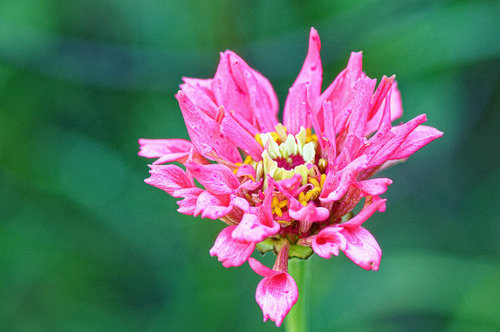


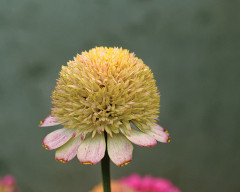








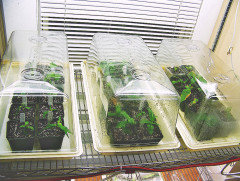




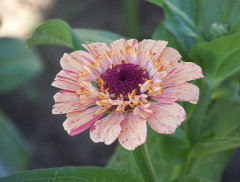

zen_manOriginal Author